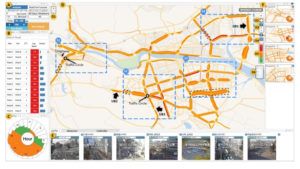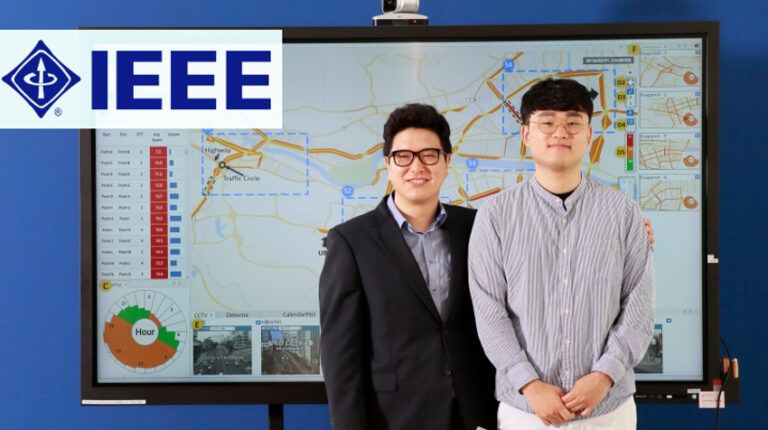A team of researchers affiliated with the Ulsan National Institute of Science and Technology (UNIST) in Korea has presented an artificial intelligence (AI) technology that can predict traffic conditions for the next 5 to 15 minutes at an error rate of less than 2.5mph (4km/h).
The development of the breakthrough technology has been led by Professor Sungahn Ko and his research team in the School of Electrical and Computer Engineering at UNIST, together with partner research teams at Purdue University and Arizona State University in the USA. The new technology is currently being used by the Traffic Broadcasting Network (TBN) in Ulsan to provide traffic information to local residents. The new system will soon
be supplied to other Korean cities, including Gwangju, Busan, Daejeon, and Incheon, by the end of the year. The new interactive visual analytics system enables traffic congestion exploration, surveillance, and forecasting based on vehicle detector data. Through collaboration between the three universities, the team has extracted task requirements, incorporated the Long Short-Term Memory (LSTM) model for congestion forecasting, and designed a weighting method for detecting the causes of congestion and congestion propagation directions.
 The new system is largely composed of two modules: one that analyzes and predicts the traffic situation; and the other for visualizing the results. Unlike previous traffic prediction systems that rely on probability and statistics to analyze past/historical traffic records for prediction, the new system provides higher accuracy by adding a deep learning algorithm that considers real-time traffic situations. The system offers near real-time traffic estimation and prediction based on the live vehicle detector data to show the causes of congestion and congestion propagation directions. Traffic situations predicted by the AI system are then visualized for easy understanding. Congestion levels and average driving speed, for example, are described using colors and shapes.
The new system is largely composed of two modules: one that analyzes and predicts the traffic situation; and the other for visualizing the results. Unlike previous traffic prediction systems that rely on probability and statistics to analyze past/historical traffic records for prediction, the new system provides higher accuracy by adding a deep learning algorithm that considers real-time traffic situations. The system offers near real-time traffic estimation and prediction based on the live vehicle detector data to show the causes of congestion and congestion propagation directions. Traffic situations predicted by the AI system are then visualized for easy understanding. Congestion levels and average driving speed, for example, are described using colors and shapes.
The development of the new system has been achieved through close cooperation with several partners, including the Korean National Police Agency, the Korea ROAD Traffic Authority (KoROAD), the Ulsan Traffic Broadcasting Network (TBN), and the Transportation and Construction Bureau of Ulsan Metropolitan City Hall. The study on the new system has been published in the IEEE journal, ‘Transactions on Visualization and Computer Graphics’.
“The new data visualization technology will be implemented in the Urban Traffic Information Center (UTIC) website, so that anyone can easily understand the road traffic situation,” said Professor Ko. “This technology, which can utilize a large amount of traffic data, can also be used to find the optimal route during bad traffic situations, in conjunction with traffic broadcasting services or navigation programs. In future work, we plan to perform more rigorous experiments by forecasting with other factors, such as weather and accidents, to develop more accurate forecasting models.”
UNIST researcher, Chunggi Lee, added, “The new system learned past average speed in certain traffic locations along with congested areas on nearby roads, and traffic conditions during rush hour. Using this system will allow navigation programs to notify the driver how current traffic conditions may change in the next 5 minutes.”





